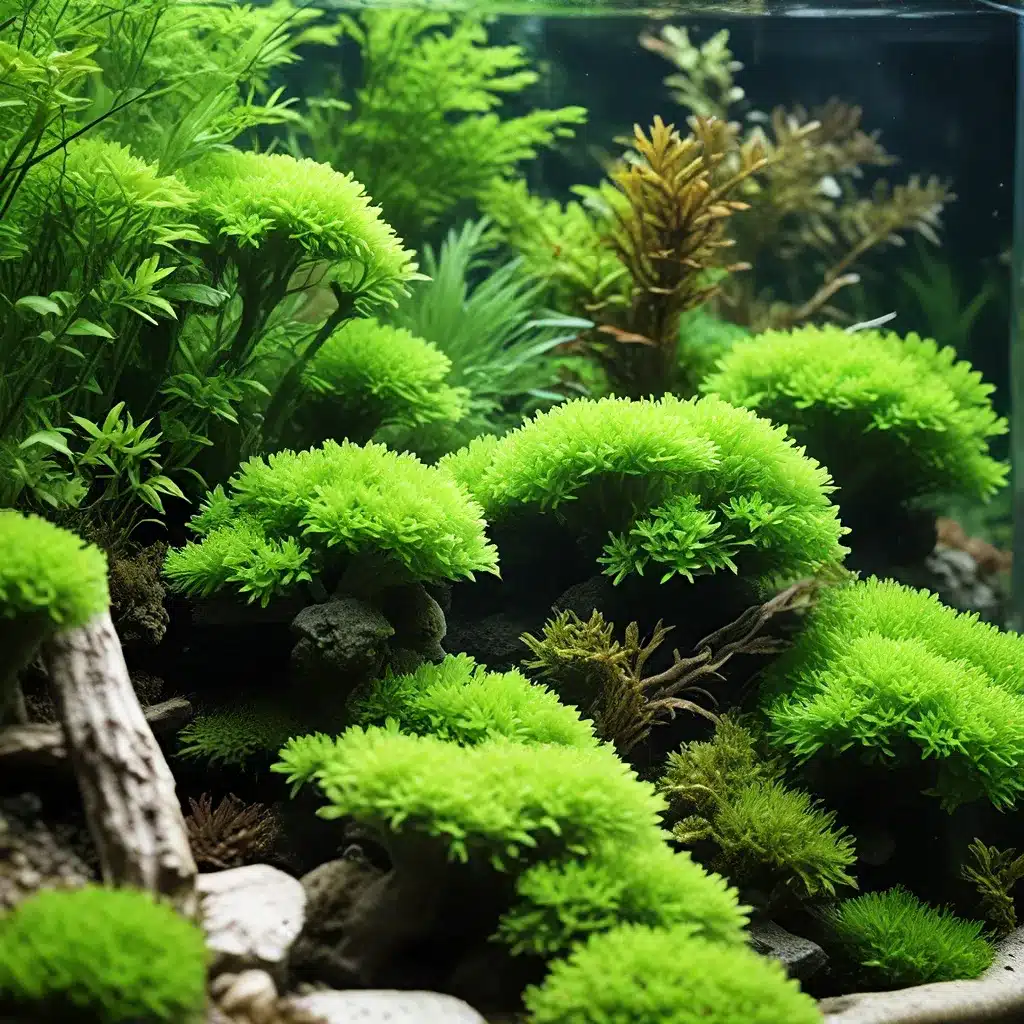
Understanding the Algae Dilemma
Maintaining a healthy, thriving aquarium can be a rewarding yet challenging endeavor for aquarists. One of the most common issues hobbyists face is the persistent problem of algae growth. Uncontrolled algae can quickly overtake an aquarium, obscuring the view of your carefully curated plants and fish, and even disrupting the delicate balance of the ecosystem.
However, with the right knowledge and strategies, you can effectively manage and prevent algae from becoming a nuisance in your aquarium. In this comprehensive guide, we’ll explore advanced techniques for controlling and preventing algae, focusing on optimizing water conditions, implementing targeted filtration, and incorporating strategic aquascaping methods.
Water Quality and Nutrient Management
At the core of algae control lies the importance of maintaining stable and balanced water parameters. Fluctuations in water chemistry, excessive nutrients, and imbalances in the aquarium’s ecosystem can create the perfect conditions for algae to thrive.
One often overlooked factor in algae control is the concept of reverse respiration, where aquatic plants release carbon dioxide (CO2) during the night instead of producing oxygen. This can lead to a rapid drop in dissolved oxygen levels, creating an environment that favors algal growth. To mitigate this issue, consider incorporating a well-designed CO2 injection system or increasing surface agitation to ensure adequate gas exchange and stable oxygen levels throughout the day and night.
Additionally, pay close attention to nutrient levels in your aquarium. Excess nutrients, such as nitrates and phosphates, can act as a catalyst for algae growth. Implement a regular water change regimen to dilute these nutrients, and consider incorporating nutrient-absorbing filter media or live plants that effectively compete with algae for available resources.
Targeted Filtration and Circulation
Effective filtration is a crucial aspect of controlling algae in your aquarium. Mechanical, biological, and chemical filtration can work together to remove organic matter, suspended particles, and dissolved compounds that contribute to algal blooms.
Mechanical filtration, such as high-quality filter media or sponges, can physically trap and remove particulate matter that algae can feed on. Biological filtration, through the establishment of a robust nitrifying bacterial colony, can help process and convert harmful nitrogenous waste into less available forms for algae.
Chemical filtration, using activated carbon or resins, can remove dissolved organic compounds and other impurities that may promote algal growth. Proper water circulation is also essential, as it ensures even distribution of nutrients and oxygenation throughout the aquarium, preventing stagnant areas that can become algae hotspots.
Strategic Aquascaping and Lighting Management
The way you design and maintain your aquarium’s layout can have a significant impact on algae control. Incorporating strategic aquascaping techniques can create an environment that is less favorable for algae growth while enhancing the overall aesthetic appeal of your aquarium.
Incorporating a variety of aquatic plants, both fast-growing and slow-growing species, can help outcompete algae for available nutrients and light. Strategically positioning plants, rocks, and decor can also improve water circulation and create shaded areas that inhibit algae growth.
Additionally, managing the intensity and duration of lighting in your aquarium is crucial. Excessive or improper lighting can lead to an imbalance in the aquarium’s ecosystem, providing the ideal conditions for algae to thrive. Experiment with adjusting the lighting duration, intensity, and spectrum to find the sweet spot that meets the needs of your aquatic plants while discouraging algae.
Proactive Maintenance and Troubleshooting
Consistent and thorough aquarium maintenance is the foundation of effective algae control. Regular water changes, gravel vacuuming, and filter cleaning are essential to remove accumulated organic matter and maintain optimal water quality.
When dealing with persistent algae issues, it’s important to identify the root cause and address it accordingly. This may involve investigating factors such as nutrient imbalances, inadequate water circulation, or insufficient plant growth. Seeking advice from experienced aquarists or consulting reliable online resources can help you troubleshoot and implement targeted solutions.
Remember, prevention is often the best approach. By proactively maintaining water parameters, optimizing filtration, and implementing strategic aquascaping, you can create an environment that is less favorable for algae growth, allowing your aquarium to thrive with a healthy, balanced ecosystem.
Conclusion
Mastering the art of algae control and prevention in your aquarium is an ongoing journey, but the rewards are immense. By understanding the underlying principles, implementing targeted strategies, and maintaining a vigilant approach, you can achieve a stunning, algae-free aquatic oasis that will captivate and inspire your fellow hobbyists.
Explore the wealth of resources available on King Aquarium to deepen your understanding of aquarium maintenance, aquascaping techniques, and the latest advancements in water management. Embark on your journey to a flourishing, algae-free aquarium and unlock the true beauty and wonder of the underwater world.

